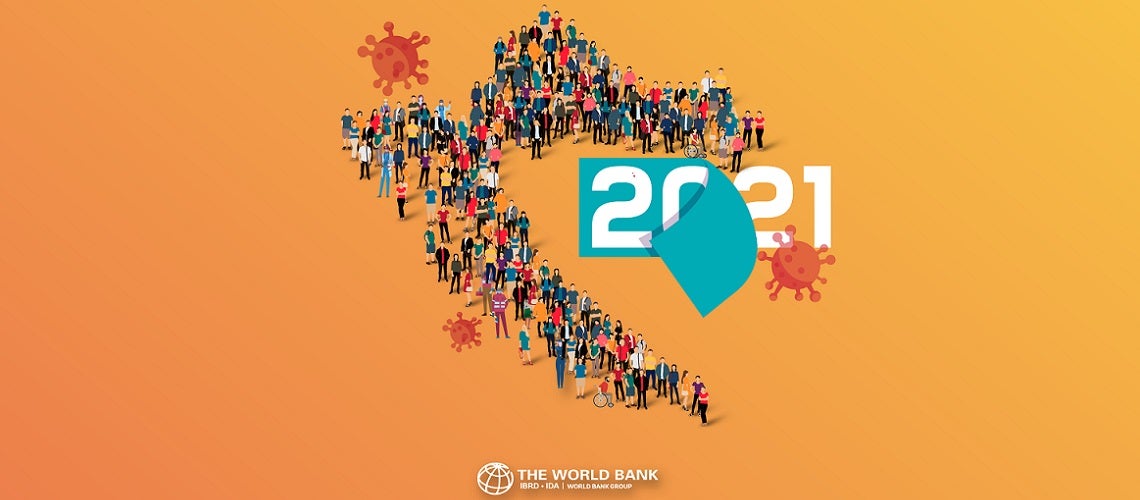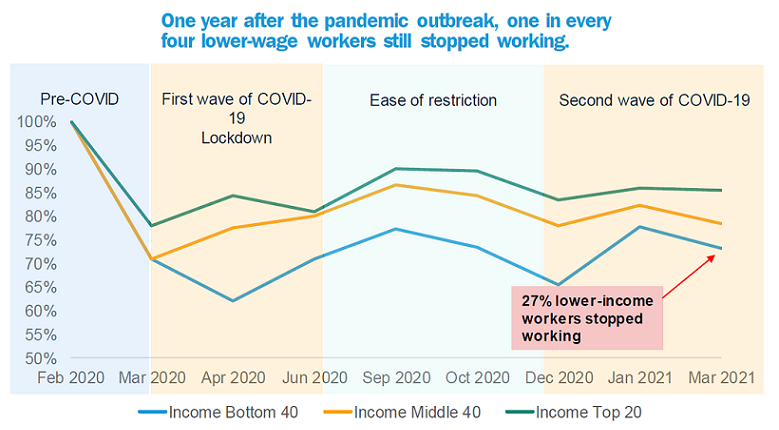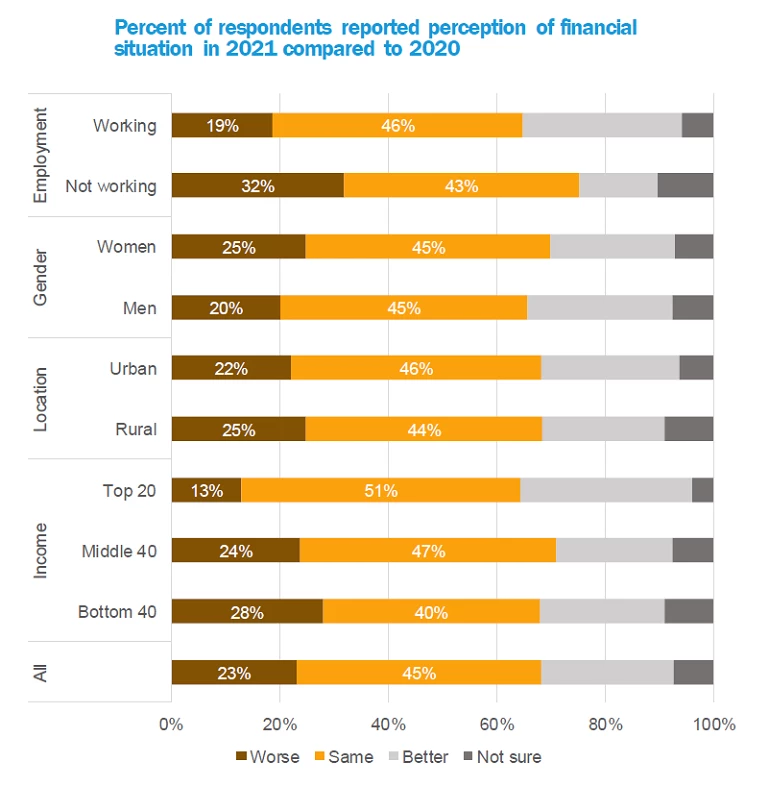 Infographic: Croatia one year into the pandemic
Infographic: Croatia one year into the pandemic
Adrijana looks out the window to watch her husband, Bartol, playing with their daughter, Cvita, in the park across the street. On the dining table is a pile of envelopes. Adrijana does not need to open them to know what they are: notices of overdue payments. Phone bills. Credit card bills. It has been over a year since the day she left her job.
Adrijana is not alone. In fact, 13 percent of households are now behind with the payments of their utility bills. The corresponding figures are 8 percent and 7 percent for phone and credit card bills, respectively.
About 20 percent of Croatians who had a job before the beginning of the economic crisis brought about by the COVID-19 pandemic are no longer working today, according to our latest survey (*). The situation is more dire for workers at the bottom 40 percent of the income distribution.
One year on, 27 percent of them are still not working compared to 14 percent of the top-income earners. Even among those that have maintained their jobs during the crisis, 9 percent have experienced a reduction in working hours.
Bartol has been able to keep his fulltime job, but the household income has still taken a hit because of Adrijana’s unemployment. They are among the 22 percent of Croatian households reporting a decline in income. The decision for Adrijana to give up her job was not an easy one. Adrijana knew that finding another job during the crisis would be a challenge, but she had little choice because she had to take care of her aging parents and her daughter Cvita when her kindergarten closed during the lockdown.
Like many Croatian families, Adrijana and Bartol have resorted to using their savings. Although their savings are relatively modest, they feel lucky to have some. In fact, more than 60 percent of Croatian households do not have adequate funds on the side to weather the pandemic. It is getting harder to make ends meet with the crisis lasting longer than expected.
Will 2021 be any better than 2020? Nearly 70 percent of people in Croatia don’t think so. Women, people in lower income brackets, and people not working are more pessimistic about their financial situation this year. The outlook for Croatian consumer confidence is not good either. More than 80 percent of the population reported they would not spend more on restaurants or durable goods in 2021 than in 2020.
Nonetheless, Adrijana is still hopeful that she will find a new job soon, although the labor market does not yet appear to be recovering, especially for female workers. As of now, about 42 percent of women in Croatia are worried about not finding a job or losing their current job, compared to 28 percent of men. More than 80 percent of Croatian women worry about the condition of the economy, compared to 67 percent of men.
But there is hope. The pickup in deployment and access to COVID-19 vaccines are encouraging indications of a faster economic bounce-back. Adrijana and Bartol are among the 60 percent of Croatians who expressed that they would take the vaccines when they are available, hoping that the number would increase with faster vaccine rollout. And the weather is getting warmer by the day... “We will get there, we just need to hold on a bit longer,” Adrijana says to herself, turning away from the window.
(*) This blog presents findings from the nationally representative Rapid Assessment Survey in Croatia. The survey was conducted by phone in June 2020, December 2020, and March 2021, with subsequent rounds planned in June 2021 and August 2021. The survey consists of 1,500 households, representative of urban and rural areas. In each survey round, households are asked a comprehensive set of questions covering the household’s welfare, including employment, incomes, savings, coping mechanism, opinions on public policy, and COVID-19 related questions.





Join the Conversation